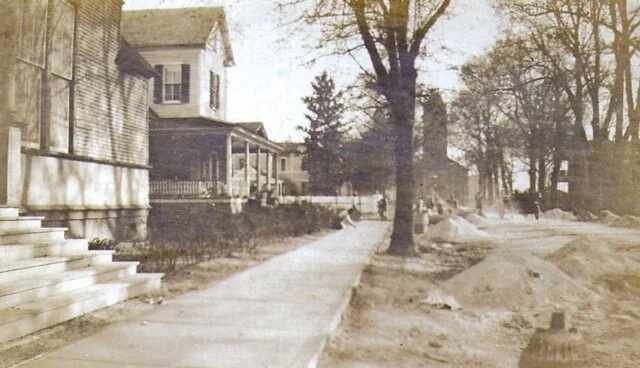From the Past
The History of Temple Sinai
The first Jewish settlers to arrive in Sumterville (the name was shortened to Sumter in 1855) were Marks and Rachael Solomons from Charleston around 1815. In 1819, Mr. Solomons opened a merchandise house in downtown Sumterville. The couple raised a family of four children.
In 1874, two acres of land was acquired from John H. Furman on Oakland Avenue for the Jewish Cemetery by the soon to be Sumter Hebrew Society. In April of 1881, the Hebrew Benevolent Society was organized in the office of Charles H. Moses for the purpose of bringing the Jews in Sumter into a single, organic body. On May 1, 1881, the two societies merged and took the Benevolent Society title. On May 5, 1895, another merger took place as the Benevolent Society and the Sumter Society of Israelites united. The organization continued under the name of Sumter Society of Israelites.
In May of 1881, the Masonic Hall was rented for $1.00 per month. The Society used the hall for their meetings as well as holding services and Sunday School for the Jewish community. The hall was on the second floor of the J. Ryttenberg & Sons store building which was located on the corner of Main and Liberty Streets.
View from the corner of Hampton and Church Streets. Temple Sinai is pictured in the left-hand corner. Circa 1910
View looking down Church Street from Liberty Street. Temple Sinai is pictured in the right-hand corner. Cira 1910
Picture of original Jewish Lecture Hall which was built in 1895.
In 1891, a lot was purchased from Anna J. McCall on the corner of Church Street and Republican Street (later changed to Hampton Street) to build the congregation’s first Temple. The Daughters of Israel held several fundraisers for the benefit of the Jewish Lecture Hall, such as selling tickets for entertainment, meals, and even a pony raffle! The necessary funds were raised, and J.W. McKiever was contracted to build the wooden building at a cost of $4,000. On September 27, 1893, McKiever broke ground for the Lecture Room, and the dedication service was held on June 19, 1895. Visiting rabbis conducted services until the congregation’s first rabbi, Rabbi Jacob Kline, was called to Synagogue in 1904.
As the congregation grew, members felt the Lecture Hall needed to be enlarged and remodeled to fit their changing needs. On June 11, 1911, at a meeting of the congregation, it was decided to go ahead with the alteration and improvement of the Synagogue. The Building Committee moved that the alterations were not to exceed $6,000. The wooden Synagogue gave place to the present brick structure in November of 1912 with the dedication of the Temple on March 8, 1913. The approximate cost of remodeling was $16,000.
Several additions have been made to Temple Sinai over the years. The original Barnett Memorial addition was built in 1932, financed by a legacy from Minnie Barnett of Manning. In 1956, the kitchen was added. Also, in 1956, the Brody family, in memory of their father, Hyman Brody, donated the Hyman Brody Educational Building. In 1960, property at the south of the Synagogue was acquired, and in 1971, another lot was added on the east side of the property. The sanctuary was given a complete remodeling in 1969. In 2018, the assembly room became Temple Sinai Jewish History Center, and in 2019, the Hyman Brody Educational Building was converted to the Ackerman Hall as a part of the History Center that would showcase traveling exhibits.
Note: It has been thought that the original wooden building burned down and was replaced by the current Temple, but a search for the date of this tragic fire could not be found in the Watchman and Southron (now The Item). The paper mentioned weddings and different services that were held in the Lecture Hall between 1897 until the completion of the renovated building in 1912, further proof that the Temple was not destroyed by fire and rebuilt. Trinity Methodist Church, at the end of Church Street, did burn down in 1960, so perhaps this is where the confusion lies.
Patty Levi Barnett: Steel Magnolia
Patty Levi Barnett was a beloved member of Temple Sinai. Please read an article about her written by Tricia Barnett Greenberg that was published in the Jewish Historical Society of South Carolina Spring 2020 Volume XXV Number 1.
Rabbi Samuel Shillman presided over confirmation exercises, Temple Sinai, Sumter, SC, May 24, 1942. Patty Levi is third from the right. Her twin brother, Wendell, is on the far left. Other confirmands, according to the program, were Faye Lomansky, Joan Schlosburg, Everett Ness, and Bernice Richman.




